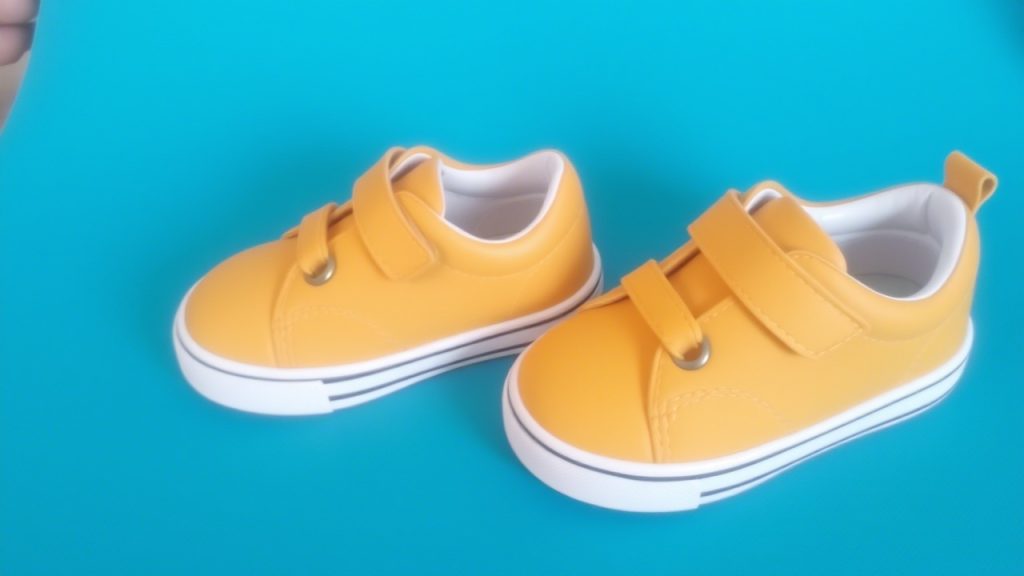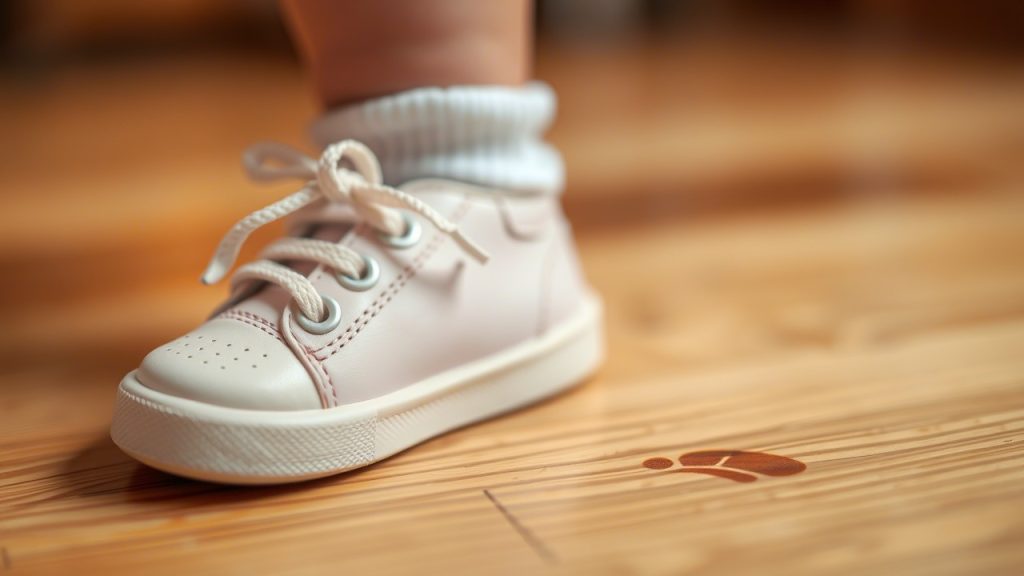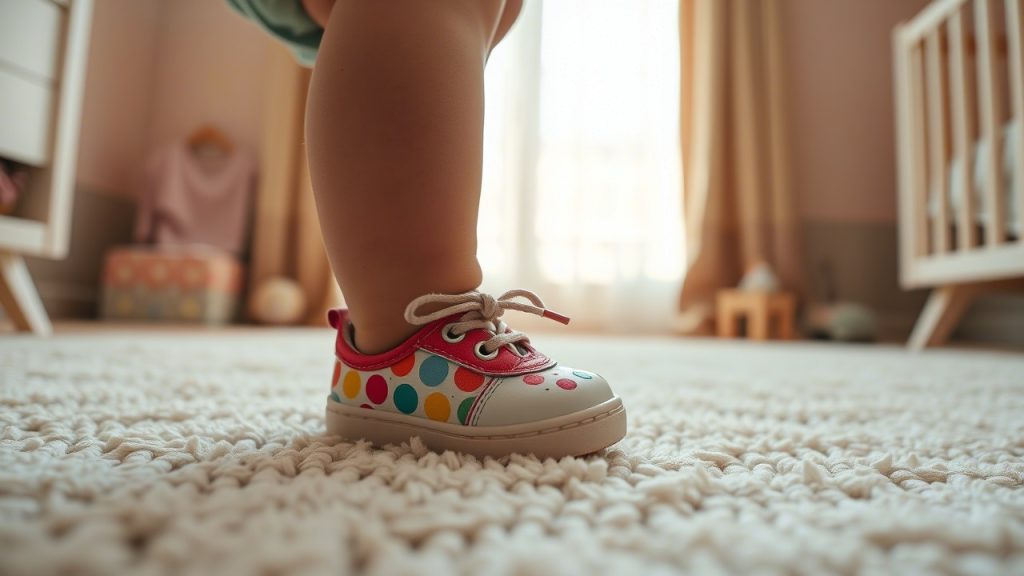As toddlers learn to walk, run, and explore, their little feet experience a lot of new pressures. Pressure points, if not addressed, can cause discomfort, irritation, and even delay healthy foot development. The right footwear can make a major difference by distributing pressure evenly and supporting natural foot movement.
We’ll explore the 10 best toddler shoes to relieve pressure points, share tips on what features to look for, and answer 9 frequently asked questions to help you pick the best shoes for your child’s comfort and health.
Why Pressure Relief Matters for Toddler Feet
Toddlers’ feet are made of soft, flexible cartilage that gradually hardens into bone as they grow. Because their foot structure is still developing, they are particularly vulnerable to pressure buildup in areas like the heel, arch, and toes.
Unaddressed pressure points can lead to:
- Redness and irritation
- Poor walking posture
- Flat feet or collapsed arches
- Pain and discomfort that discourages movement
Shoes that evenly distribute weight, provide cushioning, and allow natural foot movement can help protect against these issues.
10 Best Toddler Shoes to Relieve Pressure Points
1. Stride Rite Soft Motion Avery Sneaker
Designed specifically for first walkers, the Avery Sneaker focuses on flexibility and pressure distribution.
Key Features:
- Memory foam footbed
- Rounded soles to reduce stumbles
- Deep flex grooves for natural motion
Why It’s Great for Pressure Relief: The soft, memory foam footbed cushions the foot, while the flexible sole helps prevent pressure buildup in any one area.
2. New Balance Kids’ 888 V2 Sneaker
New Balance combines cushioning with durability in a shoe that promotes even pressure distribution.
Key Features:
- ABZORB midsole cushioning
- Lightweight leather and mesh upper
- Non-marking rubber outsole
Why It’s Great for Pressure Relief: ABZORB technology absorbs impact, reducing pressure on sensitive areas like the heel and arch.
3. See Kai Run Atlas II Sneaker
The Atlas II offers a wide toe box and flexible sole, making it ideal for toddlers needing pressure relief.
Key Features:
- Wide toe area for natural toe splay
- Removable, breathable insoles
- Durable rubber outsole
Why It’s Great for Pressure Relief: The wide toe box prevents pinching, allowing toes to spread naturally and reducing localized pressure points.
4. Pediped Flex Force
Pediped’s Flex Force shoe is crafted with active toddlers in mind, promoting comfort during movement.
Key Features:
- Flex Fit System for customized fit
- Lightweight EVA midsole
- Machine washable
Why It’s Great for Pressure Relief: The customizable insoles allow you to adjust the shoe’s fit, minimizing hotspots and pressure on growing feet.

5. Tsukihoshi Storm Sneakers
Known for orthopedic-friendly designs, Tsukihoshi focuses on foot health and pressure reduction.
Key Features:
- Wide toe box
- Antibacterial insole
- Machine washable design
Why It’s Great for Pressure Relief: The anatomical footbed and wide design ensure even weight distribution across the entire foot.
6. Livie & Luca Rover
Livie & Luca’s Rover sneaker combines style with thoughtful construction aimed at comfort.
Key Features:
- Flexible, grippy rubber outsole
- Cushioned footbed
- Adjustable Velcro strap
Why It’s Great for Pressure Relief: The flexible sole bends with the foot, while the cushioned footbed ensures pressure isn’t concentrated on specific points.
7. Keen Chandler CNX Sneaker
Designed for adventurous toddlers, the Keen Chandler CNX provides durable protection without sacrificing comfort.
Key Features:
- Lightweight, low-profile design
- Contoured arch support
- Breathable mesh lining
Why It’s Great for Pressure Relief: Its contoured arch and low-profile cushioning evenly distribute forces throughout the foot, reducing pressure on the heel and ball.
8. Robeez Soft Soles Shoes
Ideal for early walkers, Robeez soft sole shoes encourage healthy, pressure-free foot development.
Key Features:
- Suede soles for flexibility
- Soft leather upper
- Elasticized ankle for a secure fit
Why It’s Great for Pressure Relief: Soft soles allow toddlers to feel the ground, helping them adjust weight naturally without overloading any pressure points.
9. Merrell Bare Steps Sneaker
Merrell’s Bare Steps line is all about promoting natural, healthy movement.
Key Features:
- Extra-wide toe box
- Flexible, barefoot-style sole
- Lightweight construction
Why It’s Great for Pressure Relief: By mimicking barefoot movement, these shoes distribute body weight evenly and minimize the formation of pressure spots.
10. Native Shoes Jefferson
Lightweight and slip-on, the Native Jeffersons are perfect for toddlers who value comfort and flexibility.
Key Features:
- Injection-molded EVA construction
- Perforated design for breathability
- Slip-on styling with secure fit
Why It’s Great for Pressure Relief: The soft EVA material molds slightly to the foot shape, ensuring even pressure distribution without rigid spots.

What to Look for in Toddler Shoes for Pressure Relief
When shopping for toddler shoes that relieve pressure points, keep these features in mind:
- Wide Toe Box: Allows natural toe splay and prevents cramped toes.
- Flexible Sole: Lets the foot move naturally, avoiding rigid pressure areas.
- Cushioned Insole: Distributes impact evenly across the foot.
- Secure Fit: Prevents slipping and rubbing that can create pressure spots.
- Breathable Materials: Keeps feet dry and healthy.
Shoes that offer these features can help toddlers move more comfortably and confidently.
9 Frequently Asked Questions
1. Why are pressure points a concern for toddlers?
Toddlers’ feet are still soft and developing. Pressure points can cause discomfort, affect posture, and lead to foot problems later in life.
2. How can I tell if shoes are causing pressure points?
Signs include red marks on the skin, complaints about foot pain, limping, or a reluctance to walk.
3. Should toddler shoes be flexible or firm?
Flexibility is key. Shoes should bend at the ball of the foot to allow natural movement and prevent pressure buildup.
4. Are barefoot shoes good for relieving pressure points?
Yes, barefoot or minimal shoes allow for natural foot movement, reducing the risk of developing pressure points.
5. How much room should there be in toddler shoes?
There should be about a thumb’s width of space between the longest toe and the front of the shoe for proper growth and comfort.
6. Can tight shoes cause pressure points?
Absolutely. Tight shoes restrict movement, leading to hotspots and increased pressure on certain areas.
7. Are soft sole shoes better for early walkers?
Soft soles are ideal for early walkers as they allow toddlers to feel the ground, encouraging balance and even weight distribution.
8. How often should I replace toddler shoes?
Typically every 2–4 months, depending on growth spurts and wear. Frequent sizing checks are important.
9. What’s the best way to ensure a good fit?
Measure your child’s feet regularly, try shoes on both feet, and watch your toddler walk to ensure there’s no pinching or slipping.
Final Thoughts – Support Every Step
Healthy walking habits start with comfortable, properly fitted shoes. Choosing the right shoes that relieve pressure points can significantly improve your toddler’s overall comfort, posture, and movement confidence.
The 10 best toddler shoes to relieve pressure points we’ve shared here offer the perfect combination of flexibility, cushioning, and support. By investing in the right footwear early on, you’re helping your child develop strong, healthy feet — setting them up for active, happy adventures ahead.
Every step counts, so let’s make each one comfortable!





